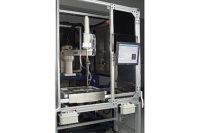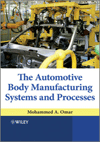PORTLAND, OR—When the Phillips screw was invented more than 90 years ago, it quickly made a splash in the automotive industry, speeding up the pace at which vehicle manufacturers could put cars together.
The screw is still a preferred choice in many fields today. The Phillips screw is named for Portland businessman Henry F. Phillips, who patented it a few years after founding the Phillips Screw Company — but although Phillips refined the new screw's design, the idea didn't originate with him.
"It was a guy named John Thompson," explained Mike Allen, author of an Oregon Encyclopedia article about the invention of the screw. Not much is known about Thompson, Allen said, describing him simply as a laborer who grew frustrated with the conventional slotted screw and thought there had to be a better approach. So he designed a patent for a screw with a cruciform top, and filed it in 1932.
Thompson's original design included the essential crisscrossing slots on the screwhead, but it wasn't quite the Phillips screw of today. It had a deeper entry slot for the screwdriver, making it look more like an icepick.
Thompson had trouble marketing his idea and couldn't find a manufacturer to help him out, so he opted to sell the design instead — and found an eager buyer in Phillips.
Phillips redesigned the look of the screwhead and changed the cruciform top, making the inset for the driver shallower. He formed the Phillips Screw Company in 1933 and was quickly granted a new patent. Phillips also ran into trouble getting a manufacturer on board for mass production, but he ultimately was able to partner with the American Screw Company.
"He envisioned that it would be good for mass manufacturing, for using on assembly lines," Allen said.
That hunch proved to be correct, and Phillips soon found the perfect customer to turn his design into a money-maker. General Motors first used the Phillips screw in the assembly line for its 1937 Cadillac. "The special screw driver required to install or remove these screws will not slip and mar the garnish moulding," the automaker noted in the car's vehicle information kit.
"Basically it made it so it could go much faster," Allen said. Within just a few years of the patent, twenty companies around the world had a license to produce Phillips screws. The United States entered World War II a few years later, Allen said, creating an avalanche of manufacturing demands that helped the Phillips screw take off.
But the war may have been a double-edged sword for Phillips himself, because some of the countries that held licenses for his design were enemies of the United States, likely making it difficult for Phillips to collect royalties. The vast amount of licenses, both with foreign and domestic companies, would lead to the patent's demise.
In the late 1940s, the U.S. government sued the Phillips Screw Company for anti-competitive practices, and by 1966 the patent for the screw had expired, which made it easy for any company to produce the Phillips design. Henry Phillips retired in 1945 and died in his Portland apartment in 1958. But the Phillips Screw Company still operates today, headquartered in Massachusetts.
Source: When a Portland businessman patented a new kind of screw, it changed how quickly cars could be made by Devon Haskins







